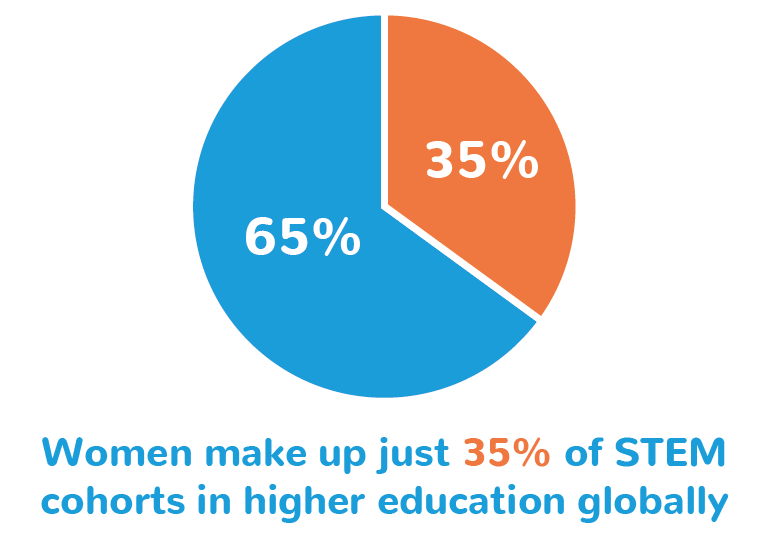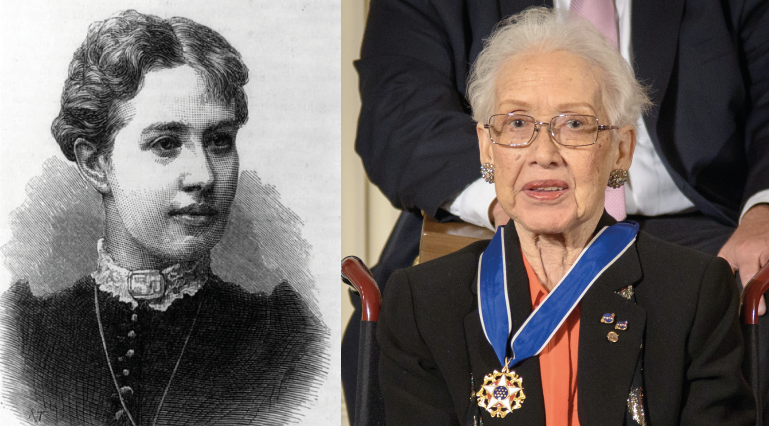To strive for quality education is to strive for equity. SDG4 has enshrined within it the intent to “eliminate [by 2030] gender disparities in education”. Levelling the playing field between boys and girls in STEM subjects is well-worn objective of educators, yet a stubborn gender gap persists. According to UNESCO, women make up just 35% of STEM cohorts in higher education globally (and just 5% of the cohorts for natural science and mathematics). A GEM report shows that self-selection into subjects seems to happen during adolescence. Across OECD countries, 15-year-old boys are more than twice as likely as their female peers to expect to work as engineers, scientists or architects (ten times as likely in the case of ICT careers).
The issue is not one of innate ability. In mathematics, gender has no bearing on attainment in the early years of schooling. Even among high attaining secondary students, boys are significantly more likely to pursue more advanced maths courses. The gender gap in mathematics, in other words, is primarily due to attitudes rather than aptitudes. Of course, the first feeds into the second: girls who do not believe they have a talent for mathematics are more likely to fulfil a self-fulfilling prophecy of low achievement.

What can we do as parents, educators and policymakers to turn the tide on girls and STEM? Here are three often overlooked suggestions that challenge us to rethink the aims and implementation of STEM initiatives. While some of these points speak directly to mathematics, their relevance extends to all STEM disciplines.

1. Inspire students with role models they can relate to
How many female mathematicians, past or present, can you name? If you’re a little stuck, here are a few to get you started. Sophie Germain was born in France in 1776. As a child, Germain was forbidden from studying mathematics because, in her time and place, women were deemed unfit to engage with such intellectual interests. Germain persisted, absorbing the books in her father’s library in secret under the duvets in the late hours, a candle her only source of light. Germain made enduring contributions to number theory and elasticity theory. Sofia Kovalevskaya was a Russian mathematician who faced similar barriers, having been forbidden to take maths classes at university. Her research on partial differential equations was so compelling, however, that she was awarded a doctoral degree in 1876 – the first woman to earn a PhD in maths. For a more contemporary example, take a moment to pay tribute to Katherine Johnson, the ‘colored computer’ who died recently aged 101. Johnson was among the Hidden Figures of NASA whose skill with mathematical modelling and calculation literally propelled mankind into space. Finally, Maryam Mirzakhani was an Iranian mathematician who made profound breakthroughs in her study of Riemann surfaces (a type of geometrical structure) before passing away in 2017 at the tender age of 40. Mirzakhani made history by becoming the first, and so far only, female recipient of the Fields medal, the highest prize in mathematics.
We all benefit from role models that we can look up to; people who create a sense of possibility for us and give us lofty goals to aspire to. Minority groups are easily burdened by what researchers term ‘stereotype threat’, where the mere reminder of one’s gender or ethnicity can dampen their academic performance. Role models are a potent way of helping girls to overcome the social stigmas often associated with them pursuing STEM. And while it may seem that female role models are in short supply such areas, it is usually just a matter of peering that little bit more deeply. The UN’s annual International Day of Women and Girls in Science, established in 2015, has made great strides in shining a light on women in science. Parents and teachers themselves, whether or not they are STEM specialists, can serve as role models by exemplifying positive attitudes towards these disciplines.

2. Get more women to lead STEM initiatives
There is a sad irony to the status quo of EdTech. Many tech-enabled products take aim at issues that affect women suffer from the most, yet the companies behind these solutions are often dominated by men. It is girls and women who are more likely to experience displacement, famine, death, forced marriage and a host of other conflict and climate induced afflictions. User-centred design is premised on the idea of uncovering users’ deepest pain points. It requires empathy first and foremost; the ability to experience and feel the lived realities of one’s target users. The low uptake of women in STEM inevitably means that women are left disenfranchised when it comes to designing solutions that are intended for them.
Companies who exclude women from their higher ranks are imperilled by a lack of what psychologists call “cognitive diversity”. The most complex problems require a diverse mix of skills and perspectives that combine to expand the space of possible solutions. To restrict problem solving to a single gender is to restrict the range of tools and strategies that can be brought to bear on an issue. The business case for women-led EdTech was made clear in a recent EdSurge article, which reports that “for every dollar of venture capital funding received, women-led businesses generated 78 cents. For businesses launched by men, the return was 31 cents.” Equity just makes good commercial sense.
Lastly, here is an often overlooked suggestions that challenge us to rethink the very aims and implementation of STEM initiatives.

3. Make maths more conceptual
When we speak of the attainment gap in mathematics, it is with reference to the prevailing norms of how the subject is taught and assessed. School mathematics places a strong emphasis on procedural knowledge; rules and algorithms such as long division and the quadratic equation that students are expected to memorise and apply fluently, often through drills and timed exams. This brand of mathematics seems to privilege boys, whose competitive instincts (no doubt nurtured by their environmental cues) make them more inclined towards performance-based tasks. Stanford maths Jo Boaler is a leading voice among a growing band of educators calling for a rethink to the way we teach mathematics. She argues for more emphasis on the conceptual elements of mathematics, and points to research that shows girls excel in more open-ended tasks that summon their creative thinking skills.
The argument for a conceptual, creative brand of mathematics is not limited to concerns of gender equity. SDG4 calls for “relevant skills”, and the mathematical skills most relevant a decade from now will correspond to those least susceptible to automation. While procedural knowledge will always remain one essential component of mathematical thinking, it is no longer sufficient in a workplace fuelled by computers that subsume these tasks. All students, boys and girls alike, will depend on a brand of mathematics that does not come so easy to intelligent machines. Equity will be a welcome by-product of this shift.

